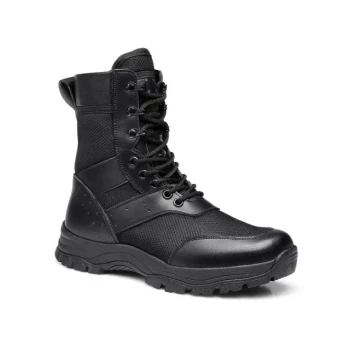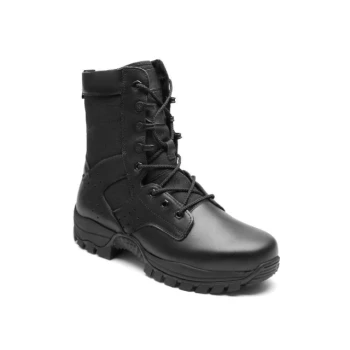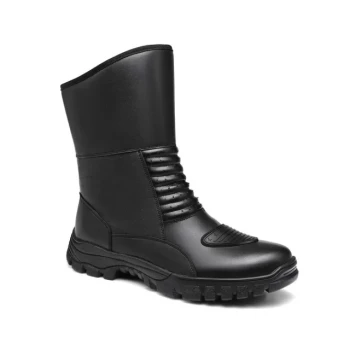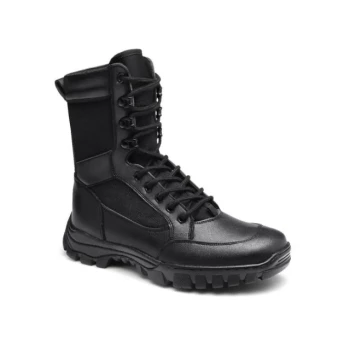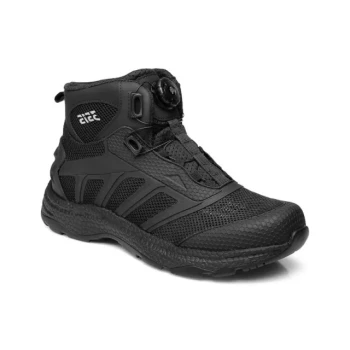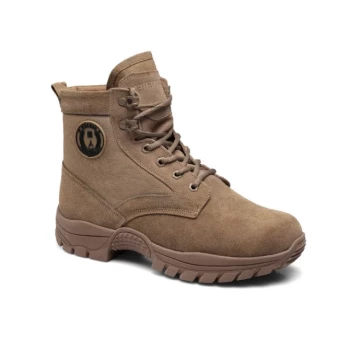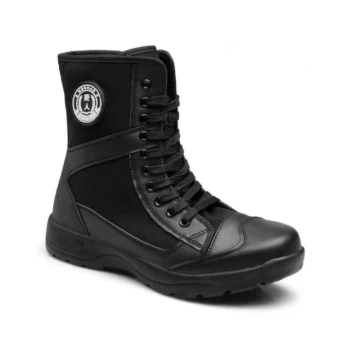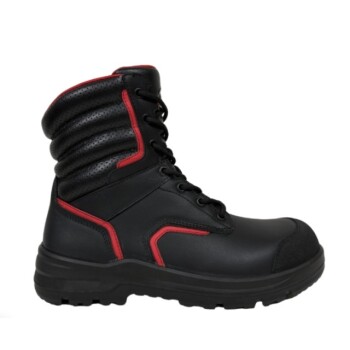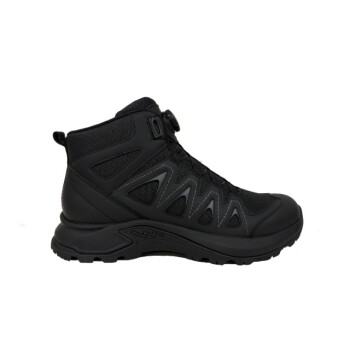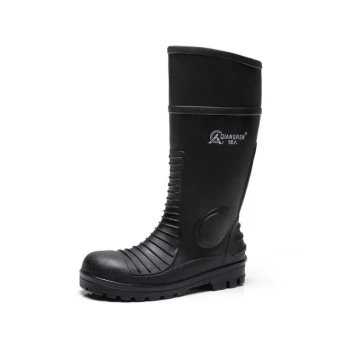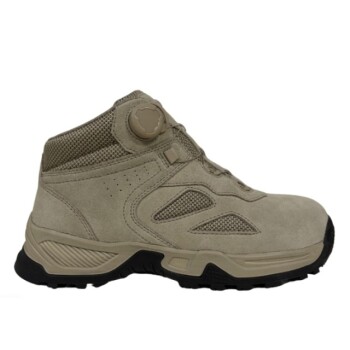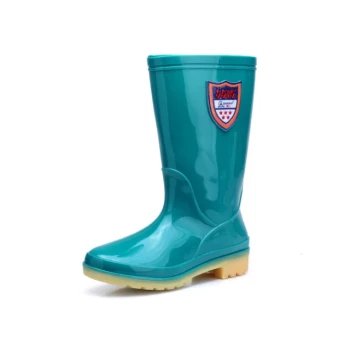At its core, ankle support in tactical boots is not a single feature but a system of design choices. The variation comes from three main factors: the height of the boot's cuff, the rigidity of its structural materials, and the design of the lacing system that secures it to your foot.
The level of ankle support in any tactical boot is a direct reflection of its intended purpose. High, rigid boots are built for stability under heavy loads on rough terrain, while lower, more flexible boots prioritize mobility and speed on more predictable surfaces.
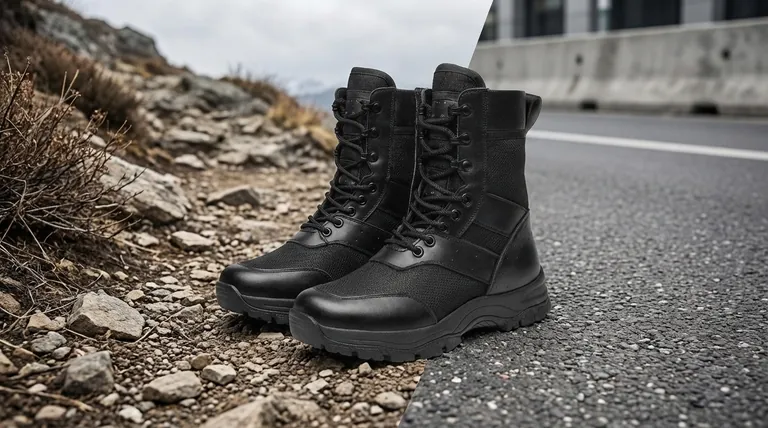
The Core Components of Ankle Support
To understand the differences between boot types, you must first understand the mechanisms that provide stability. Ankle support is achieved through a combination of three key design elements.
Boot Height (High vs. Mid-Cut)
A boot's primary defense against ankle rolls and sprains is its height. A higher cuff acts as a physical brace, limiting the ankle's ability to move into injurious positions.
High-cut boots, which extend well above the ankle bone, offer the maximum level of support. This design is standard for military and heavy-duty combat boots.
Mid-cut boots end at or just above the ankle bone. They provide a good balance of support and mobility, making them common for police duty and tactical hiking boots.
Structural Reinforcement
The materials and construction of the boot itself contribute significantly to stability. A flexible boot, regardless of height, will offer less support than a rigid one.
Key features include a heel counter, a stiff piece of material cupping the back of the heel to prevent it from sliding and twisting within the boot.
Manufacturers also use reinforced materials and stitching, especially around the ankle and heel, to create a more rigid chassis that resists torsional flex.
Lacing Systems and Fit
A proper fit is non-negotiable for effective ankle support. The lacing system is what allows you to customize this fit, cinching the boot securely around your foot and ankle.
Lacing systems on tactical and hiking boots are often designed with eyelets or hooks that extend up the shaft. This allows you to create specific pressure points that lock your heel in place and wrap the boot's collar snugly around your ankle.
A Spectrum of Support: Common Boot Types
Different tactical boots combine the components above in unique ways, creating a spectrum of support tailored for specific missions.
Maximum Support: Military & Combat Boots
These boots are engineered for worst-case scenarios: carrying heavy packs over unstable, rugged ground.
They almost always feature a high-cut design combined with stiff structural materials and a pronounced heel counter. The goal is to maximize stability and prevent injuries when a single misstep can be critical.
Balanced Support: Tactical & Duty Hiking Boots
This is the versatile middle ground for law enforcement, general-purpose use, or varied terrain.
These boots typically use a mid-cut or high-cut design but with slightly more flexible materials than a dedicated combat boot. Their lacing systems are crucial, allowing the user to cinch the boot tight for support when needed.
Minimal Support: Athletic & Lightweight Boots
Built for speed and agility in urban or stable environments, these boots prioritize mobility over protection.
Often called "tactical running boots," they are low or mid-cut and made from highly flexible materials. They typically lack significant ankle support, instead focusing on features like cushioned midsoles and arch support for comfort during high-impact movement.
Understanding the Trade-offs
Choosing the right level of ankle support involves balancing competing priorities. There is no single "best" option, only the best option for your specific context.
Support vs. Mobility
This is the primary trade-off. The more rigid and supportive a boot is, the less ankle flexion it allows.
While this protects you on a rocky trail, it can be a significant disadvantage when you need to run, drive a vehicle, or navigate tight spaces.
Protection vs. Weight
Structural reinforcement adds weight. A heavy-duty combat boot that offers maximum support will be heavier and more fatiguing to wear over long distances than a lightweight athletic boot.
The Myth of "Casting"
Ankle support should not be confused with complete immobilization. A well-designed boot provides a firm brace against unnatural, sideways movements (inversion/eversion) while still allowing for the natural range of motion required for efficient walking and running.
Making the Right Choice for Your Needs
To select the appropriate boot, evaluate your most common activities and environments.
- If your primary focus is carrying heavy loads or navigating rough, unpredictable terrain: Choose a high-cut boot with significant structural reinforcement for maximum stability.
- If your primary focus is all-around duty in varied urban and outdoor environments: A mid-cut tactical hiker or duty boot offers the best balance of support and flexibility.
- If your primary focus is speed, agility, and performance on stable surfaces: Select a lightweight athletic or garrison boot that prioritizes mobility over ankle protection.
Ultimately, the right tactical boot is the one whose support system correctly matches the demands of your mission.
Summary Table:
| Boot Type | Primary Use | Ankle Support Level | Key Features |
|---|---|---|---|
| Military & Combat Boots | Heavy loads, rugged terrain | Maximum | High-cut, rigid materials, pronounced heel counter |
| Tactical & Duty Hiking Boots | Varied urban/outdoor environments | Balanced | Mid/High-cut, flexible materials, customizable lacing |
| Athletic & Lightweight Boots | Speed, agility on stable surfaces | Minimal | Low/Mid-cut, highly flexible, focus on cushioning |
Need Tactical Boots That Perfectly Match Your Mission's Demands?
As a large-scale manufacturer, 3515 produces a comprehensive range of tactical, combat, and duty footwear for distributors, brand owners, and bulk clients. Our production capabilities encompass all types of boots, from maximum-support combat models to lightweight athletic designs.
We can help you:
- Distributors & Brand Owners: Source or develop a precise boot lineup tailored to your market's needs.
- Bulk Clients: Equip your team with durable, mission-specific footwear built for performance and protection.
Let's discuss your requirements and get you the right support. Contact our team today for expert consultation and competitive pricing.
Visual Guide
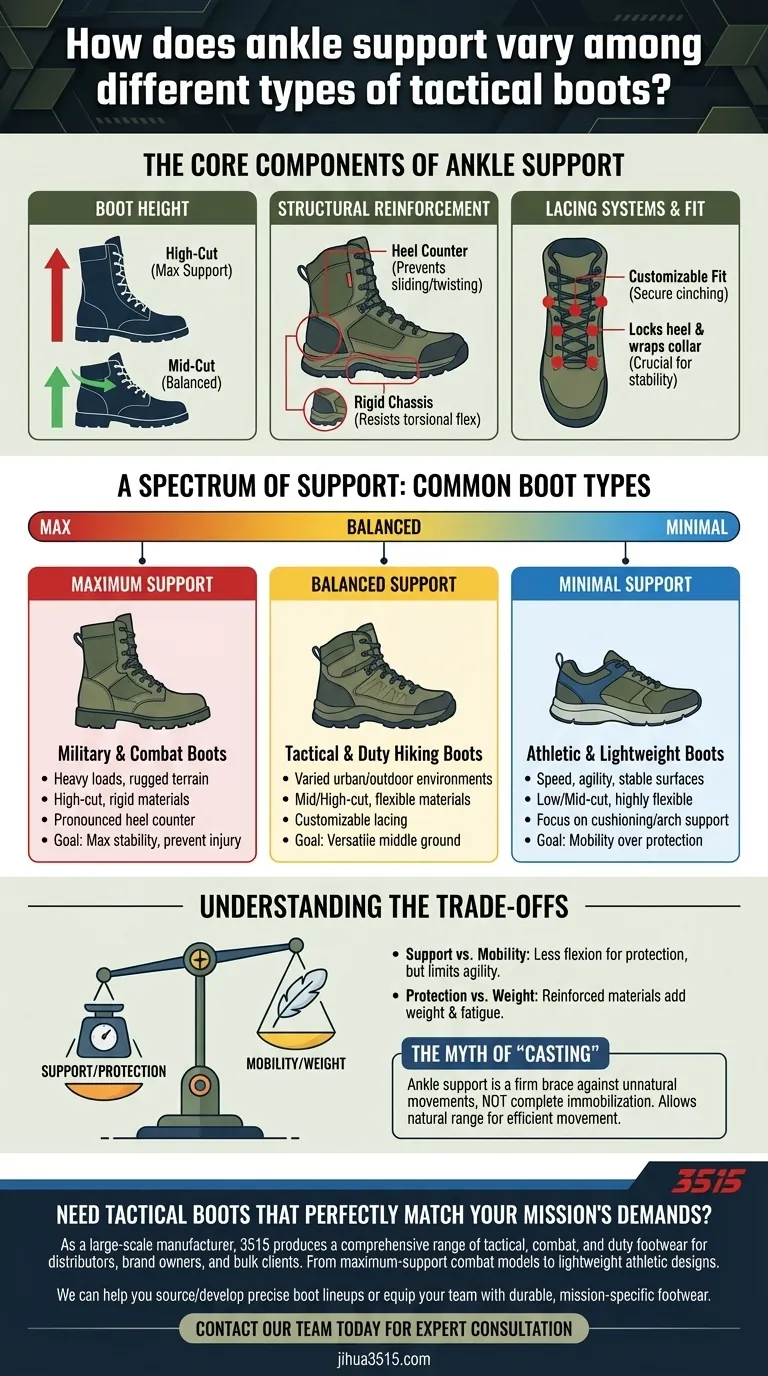
Related Products
- Durable Leather High-Ankle Tactical Boots for Wholesale & Custom Manufacturing
- Durable Leather Tactical Boots Wholesale & Custom Manufacturing for Brands
- Wholesale Tactical Boots High-Traction & Reflective for Bulk & Brand Orders
- Durable High-Ankle Tactical Boots Wholesale Manufacturer for Custom & Bulk Orders
- Wholesale Lightweight Tactical Boots with Dial Closure OEM & Bulk Orders
People Also Ask
- What does the upper part of a tactical boot cover? Your Guide to Protection, Fit, and Performance
- How does the material of tactical boots affect their performance? Choose the Right Material for Your Mission
- What features distinguish a tactical boot from regular boots? Uncover the Key Design Differences
- In what scenarios are tactical boots particularly useful? Maximize Mobility and Durability in Demanding Environments
- How should tactical boots be dried after cleaning? Preserve Boot Integrity & Lifespan
